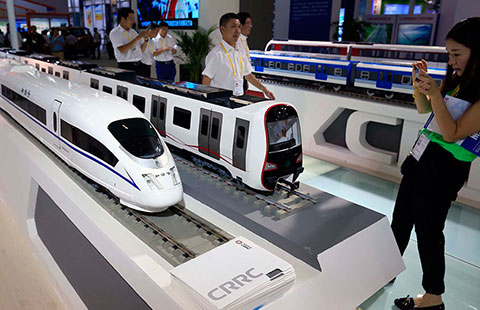Double-hit leads to escalating market adjustment
By Zhu Bin (chinadaily.com.cn) Updated: 2015-08-03 14:33In June, sales of passenger vehicles in China declined in year-on-year terms for the first time since the global financial crisis in 2008, excluding the months of January and February in each year, during which the year-on-year comparisons are distorted by the timing of the Lunar New Year holiday.
Sales of locally-made passenger vehicles in the month fell by 1.4 percent on last year, bringing year-on-year growth down to 2.8 percent in the and to 7.2 percent for H1 as a whole.
A closer look at the seasonally adjusted annual rate paints an equally dismal picture, with the selling rate of passenger vehicles dropping to 19 million units in June, marking the lowest level in the last 11 months since July 2014.
The average SAAR in the second quarter for passenger vehicles reached just 19.6 million units, falling from the 21 million units seen in the first quarter in 2015 and 20.8 million in the fourth quarter 2014.
China Automobile Dealers Association's dealer-level inventory index stood at 1.68 months at the end of June, virtually unchanged from 1.7 months in May and 1.67 months in April.
Typically, wholesales strengthen at the end of each quarter, but the current high inventory levels at dealerships are undermining any potential momentum, hence the decline in passenger vehicle sales in June.
The overall inventory picture further suggests a slowdown in retail sales of passenger vehicles as dealers have made very little progress in their efforts to clear built-up stock, in spite of considerably lower wholesales.
This raises a fundamental question: is it really the case, as is commonly supposed, that the economic slowdown is the main culprit for the drop in actual demand for passenger vehicles? We think not.
The recent market volatility can be better understood by a closer analysis of vehicle registrations across China, which have followed highly diverse trends, depending on the city's tier.
In the first five months of 2015, passenger vehicle registrations in the first-tier and second-tier cities declined by 4 percent on 2014, versus the 21 percent year-on-year growth seen during the same timeframe last year. In contrast, the comparison in third- to fifth-tier cities was decidedly consistent, with year-on-year growth of 14 percent achieved in both years.
Given that the first- and second-tier cities were responsible for almost half of the market growth in the first five months of last year, the recent slowdown in sales in the overall market is a natural consequence of the growth decline in registrations so far in 2015.
Delving a little deeper into recent developments in China's largest cities will help to unravel the reasons behind these disparities.
- 2015 China International Fair for Investment and Trade kicks off in Xiamen
- China's commodity imports robust in Jan-Aug period
- China stocks rebound 2.92%
- 2015 China box office already past 2014 total
- China foreign trade decline widens in August
- Interview: JP Morgan's senior executive bullish on China
- Innovation, development the focus for NZ mayors
- Lives of freelancers

















